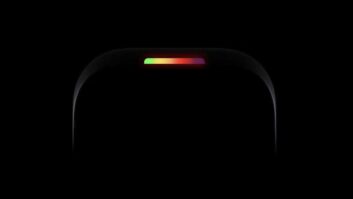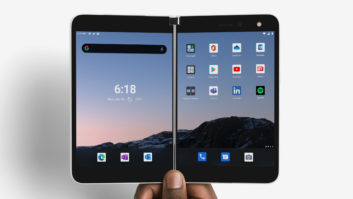
Since launching with Sony’s Walkman in the early 1980s, the global personal electronics market has grown to reach $540 billion in retail value in 2016 and supports a range of accessories worth a further $60 billion.
The category is marked by many failed, forgotten or fading products, such as the mini-disc player, e-book and pager, but it has grown to account for 55 percent of total consumer electronics revenues.
More recently, the mobile phone has become one of the greatest success stories in consumer electronics, but at the cost of many products it later came to cannibalize. Feature convergence saw camera phones, and recently smartphones, almost completely envelop discrete categories within the personal electronics market through the period 2005-2013. The budding categories of personal A/V and imaging particularly suffered. In 2007, those products out-shipped smartphones, but just three years later smartphone demand had more than doubled, and digital cameras and MP3 players both lost their relevance. In just one year, two progressive categories had gone from respectable demand growth to a 10 percent decline in shipments.
Since 2011, the personal electronics market has almost entirely converged around the smartphone. In 2017, we expect 2.6 billion personal device shipments, of which smartphones will account for 68 percent – compared with 1.3 percent for standalone cameras and personal A/V products, which at their peak comprised almost 20 percent of the personal electronics market volume.
Manipulated by demand, mobile phones have been kneaded in terms of shape, size and feature set. Initial pressure pushed smaller form factors. The feature phone was something we needed, but its bulkiness was off-putting – we were not willing to give up pocket space for a device that could merely send and receive calls and texts. The emergence of smartphones, alongside mobile apps like YouTube, Facebook and Instagram, expanded the content we could consume from a handheld device, demanding a greater screen size for a more immerse experience and convenient use.
In addition to screen size, there is a view that tangible advances to smartphones have slowed in the last few years. High-end or flagship smartphones are almost homogeneous. Competition in both hardware and software is difficult when the “ultimate” smartphone design, use case and feature set have been found.
So, are we at the end point of the smartphone? Have vendors created the “perfect” portable consumer device? Has portable electronics reached its pinnacle, from both an industry and user perspective?
New products and technologies are emerging that have the potential to reduce consumers’ reliance on smartphones – those which offer new windows into the Internet, and potentially more convenient and/or secure ways to interface with it. eSIM, flexible displays, voice UI, and next-generation wearables are all beginning to show their potential to influence, or even derail, the smartphone’s dominance.
Certain smartphone functions are already transferring to other discrete ‘devices.’ One example is virtual personal assistants in the home and car. The early popularity of these devices in the home suggests that the mobile handset is not the only way consumers want to access and control Cloud-based services and hardware.
Through flexible displays, we expect to see a resurgence of the clamshell form factor, and later fully malleable smartphones. A Futuresource survey of the flexible display industry showed that an expected 17 percent of phones will include a curved or malleable display by 2021. Flexible technology will also lend itself to head-mounted displays, an important emerging personal entertainment device. Virtual reality is already a promising segment, and is the catalyst for a growing personal entertainment market using dedicated devices, moving away from smartphones, tablets and PCs.
While the smartwatch market has stalled, the longer-term opportunity for wrist-bound devices with a range of smartphone features remains an opportunity. Already there are clear benefits for some smart functionality, for example greater security from a payment device being attached to the body, as opposed to being loose in our pockets.
As technology facilitates better smartwatch designs and the inclusion of features consumers demand from smart devices, the question of whether we need larger form factor devices is raised. While it is uncertain which device will fill the content consumption gap left by the smartphone, for communication and on-the-go use the smartwatch will soon be a rival standalone product.
eSIM is set to remove the need for a physical SIM card and allow multiple device registrations under one network identity. In the distant future, our connected world could manifest itself in a series of more convenient and application-specific devices and connected accessories. A market of tethered eye-wear, watches, wearable cameras and other independent screens or devices could take the smartphone’s place, resembling the more diverse standalone personal electronics model from 20 years ago. The fluidity and ability to move between devices that eSIM could bring may provide greater consumer choice and more advanced individual technologies than are available or possible when limited to the smartphone.
As the consumer IoT and smart-home markets progress, we will see less and less reliance on the smartphone. Ultimately, we could be deconstructing aspects of the mobile phone as usage of certain functions transfer to more appropriate form factors, based on convenience, security and improved experience.
The smartphone will, most probably, remain the most important personal electronics device for consumers for the foreseeable future, but as technology progresses, we will not rely on or be limited to the smartphone forever. The smartphone market will eventually fall. New standalone devices will come to market and, inevitably, another product will again push these from relevance.
James Manning Smith is aninformation analyst at Futuresource Consulting, which provides specialized research and consulting services including market forecasts and intelligence reports to the CE, broadcast, entertainment and EdTech industries, among others.













